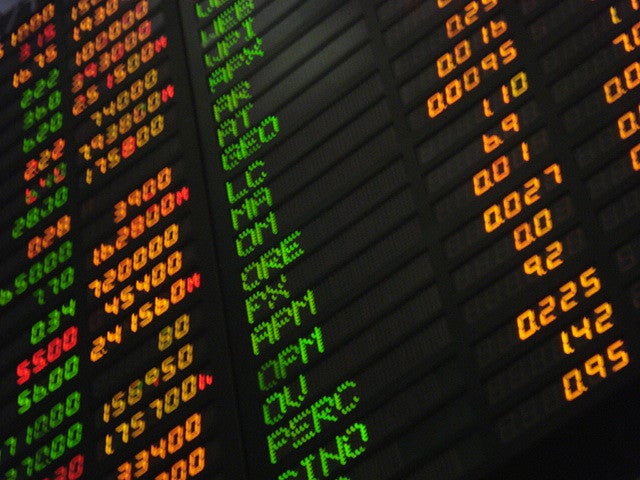- March 24, 2025
- Posted by: Regent Harbor Team
- Category: Global Economy

Economic Instabilities in the Wake of Tariff Uncertainties
The unpredictable nature of President Donald Trump’s tariff policies has undoubtedly contributed to widespread economic apprehensions, leading some to speculate about a looming recession.
Investor Decision-Making in Uncertain Times
Jana Grittersová, a former central banker and economist at the European Commission, sheds light on how tariff uncertainty affects the mindset of investors. Essentially, this unpredictability hampers firms’ ability to foresee corporate earnings, manage supply chain costs, and anticipate global market demand. Consequently, expansion plans and new hirings are often shelved.
Within a volatile tariff environment, investors tend to demand higher returns for holding riskier assets, such as equities, especially in sectors heavily reliant on international trade. Instead, they shift towards defensive stocks, like utilities and healthcare, or safe-haven assets such as gold.
| Asset Type | Investor Shift |
|---|---|
| Equities | Demand higher returns |
| Defensive Stocks | Increased investments |
| Gold | Safe-haven allocation |
Meanwhile, the S&P 500 has seen declines, whereas Europe’s Stoxx 600 has risen by 12%, driven by a weakening dollar and expectations of higher European defense spending (source: The Economist). Thus, the frequent fluctuations in trade policy contribute to an unstable business climate.
Markets’ Evolving Reactions to Tariff Announcements
Early on, markets reacted positively to Trump’s pro-trade announcements, such as delaying threatened tariffs. Now, they show skepticism towards such news. Initially, markets considered Trump’s protectionist rhetoric as a negotiation tactic.
However, repeated reversals, like sudden hikes and exemptions, eroded trust. Investors now view concessions as temporary, skeptical of lasting resolutions. The fear of retaliatory measures, such as potential European Union tariffs on U.S. goods, exacerbates concerns.
Notably, events like the 2025 tariff delays for Canada and Mexico temporarily eased investor worries. Yet, persistent unpredictability has tarnished confidence, reflecting stock markets’ tepid responses to positive news.
Trade Deficit Musings
Indeed, the U.S. maintains a persistent trade deficit, importing more than it exports. In 2024, this deficit reached a record $918.4 billion, a significant leap of 17% from the prior year. This figure underlines America’s reliance on imported goods, particularly due to the U.S. dollar serving as the world’s foremost reserve currency.
Components Contributing to the Deficit
- U.S. Dollar Demand: Central banks globally hold about 60% of reserves in the dollar.
- Consumer Preferences: U.S. consumers are avid buyers of goods with imported parts.
- Increased Production Costs: Trump’s tariffs have the unintended consequence of raising domestic production costs.
As companies depend on global supply chains, Trump’s tariffs risk adverse effects. They might increase production costs, hurting competitiveness and even triggering retaliatory actions that further widen the trade deficit.
The Fear Gauge: Cboe Volatility Index
The so-called “fear index,” specifically the Cboe Volatility Index (VIX), tracks expected market volatility. Rising during uncertainty, it reflects demand for hedges against declines. In March 2025, it hovered around 25, indicating elevated market concern, albeit not crisis-level.
For historical context, the VIX surged near 80 during the 2008 financial meltdown. Currently, factors like trade tensions and supply chain disruptions in industries such as car manufacturing present risks for increased VIX levels.
Diminishing Consumer Sentiment
The U.S. Consumer Sentiment Index hit a two-year low of 57.9 in March 2025 (source: University of Michigan). This decline signals growing public pessimism, attributed largely to economic uncertainties stemming from tariff policies.
Despite prevailing low sentiment, consumer spending, especially among high-income groups, remains robust. However, lower-income brackets face harsh challenges, with rising housing costs exacerbating strains. Continued pessimism might curtail discretionary spending on travel, homes, and cars.
Key Economic Indicators to Watch
Several critical economic indicators warrant attention, including:
- Consumer Sentiment Index: Now at a two-year low, indicating public confidence levels.
- Inflation Expectations: Currently at 4.9% for the coming year, influencing behavior and policies.
- GDP Growth Rate: Recent projections raise concerns about negative growth in early 2025.
Particularly, a flat or inverted yield curve, historically predicting recessions, deserves watching. Protectionist trade policies further fuel inflation and slow global trade, signaling potential economic challenges ahead.
